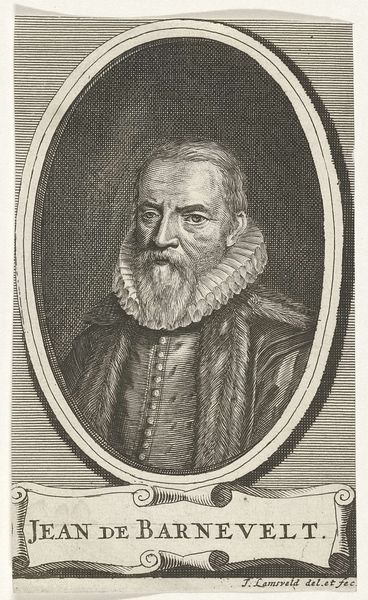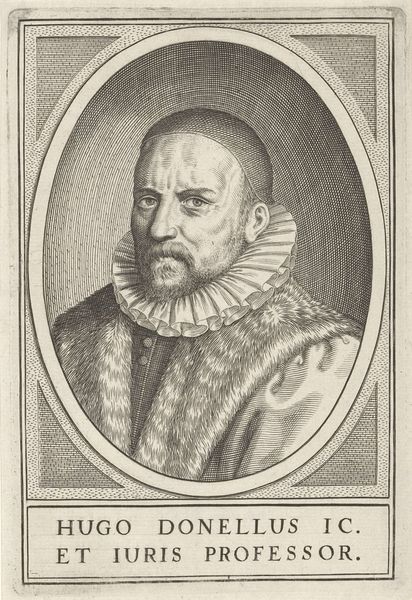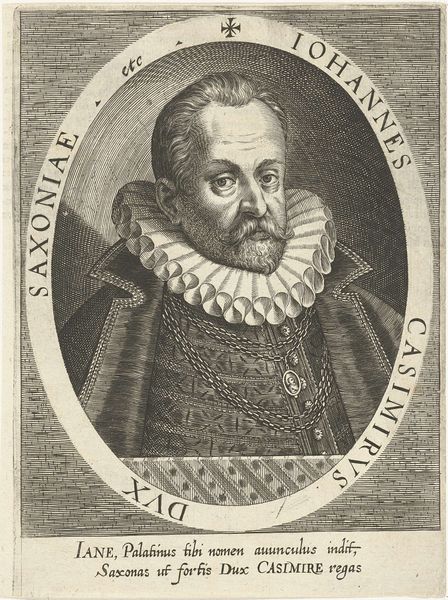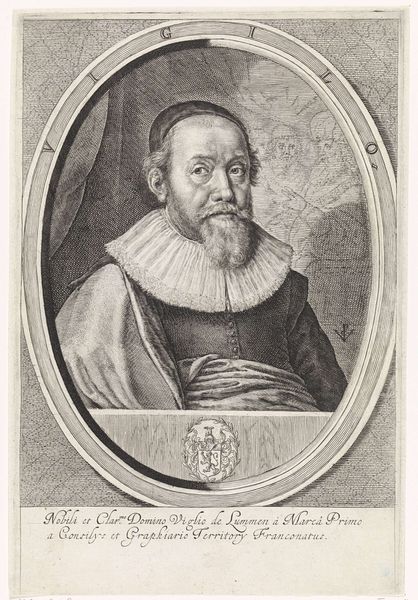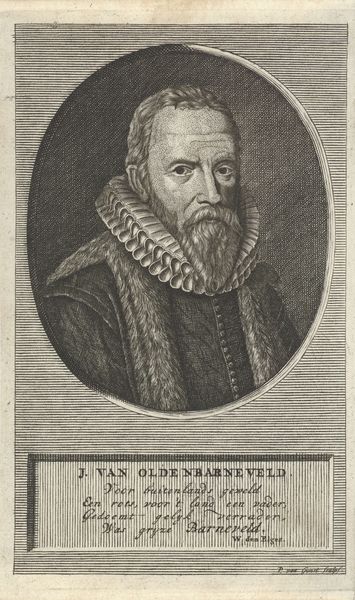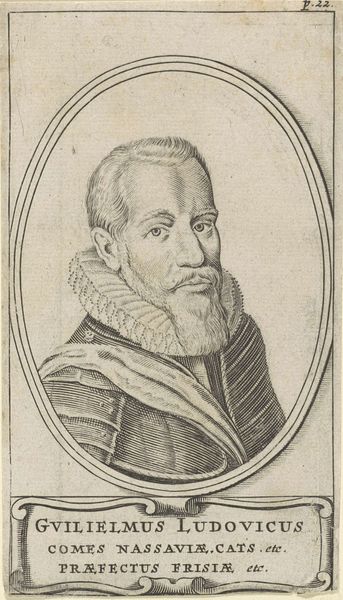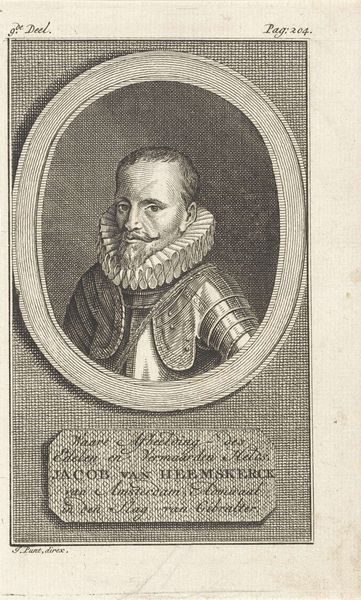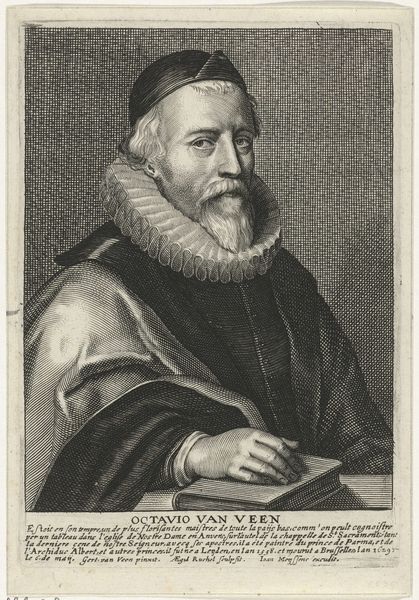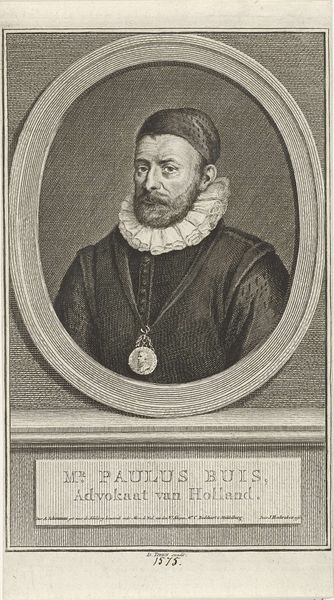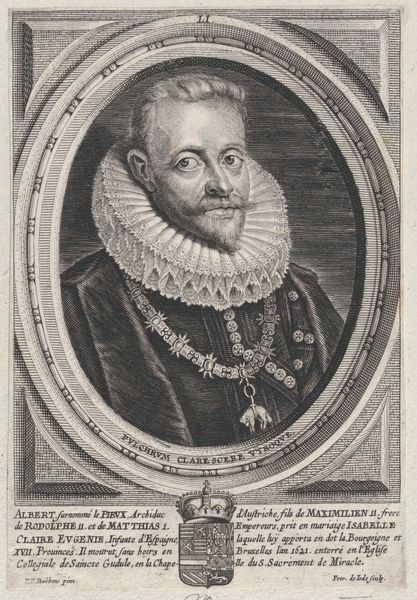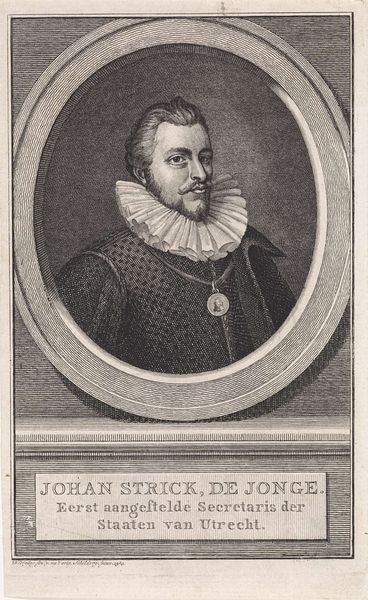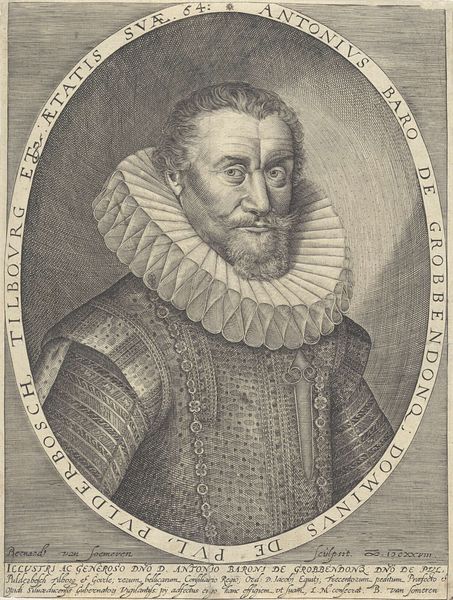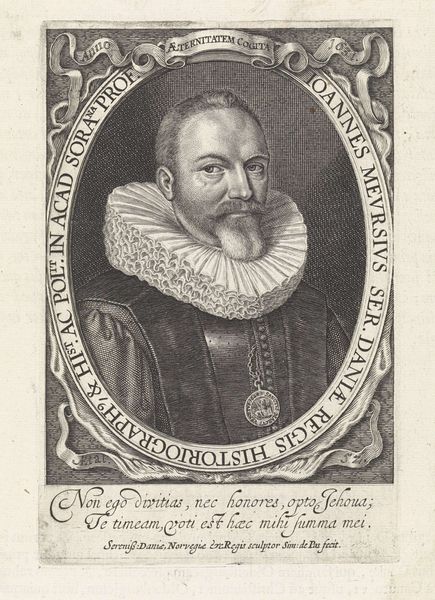
print, engraving
#
portrait
#
baroque
#
dutch-golden-age
# print
#
engraving
Dimensions: height 156 mm, width 104 mm
Copyright: Rijks Museum: Open Domain
Editor: So here we have Willem van Swanenburg's "Portrait of Aelius Everardus Vorstius," an engraving from 1609. There’s a real intensity in his gaze; it feels very deliberate, almost… calculating? How do you interpret this work? Curator: The intensity you observe, it speaks to something deeper than just a visual record. Consider the oval frame – it’s like a lens focusing not only on Vorstius’ likeness but also on the weight of his status, “Medicinae Professor & Magnificus Rector," rendered directly below him. Notice how the lines around his face, his beard, almost vibrate? What emotions do these attributes stir for you? Editor: They amplify that feeling of intelligence and rigor, but there's also a certain severity… is that the right word? Curator: Perhaps. Now, observe his ruff. What does that repetitive, almost claustrophobic form communicate to you? Ruffs like that, they weren't merely fashion, were they? Think of the effort required to maintain such attire, what message it sent. What cultural values were embodied by that specific, costly presentation of self? Editor: Right! The ruff speaks to status, but also perhaps constraint? Restricting movement... It is interesting how cultural identity, even personal identity, gets built up out of all these small signs. Curator: Precisely. Identity solidified through cultural symbols. These weren’t simple decorative choices but powerful assertions of identity and position within a complex social framework. I wonder, what continuous cultural links can you find from the details of this portrait to similar features in works today? Editor: I see the remnants of that deliberate self-fashioning echoed even today, in how academics or professionals might present themselves… maybe it is that act of shaping the external image to signal something internal. I’ll certainly look at portraits with a more critical eye from now on. Curator: Excellent. Consider how artists have always grappled with visual symbols and their layered, psychological implications; perhaps now you'll view those symbols, from any period, as more intentional, more meaningful than before.
Comments
No comments
Be the first to comment and join the conversation on the ultimate creative platform.
